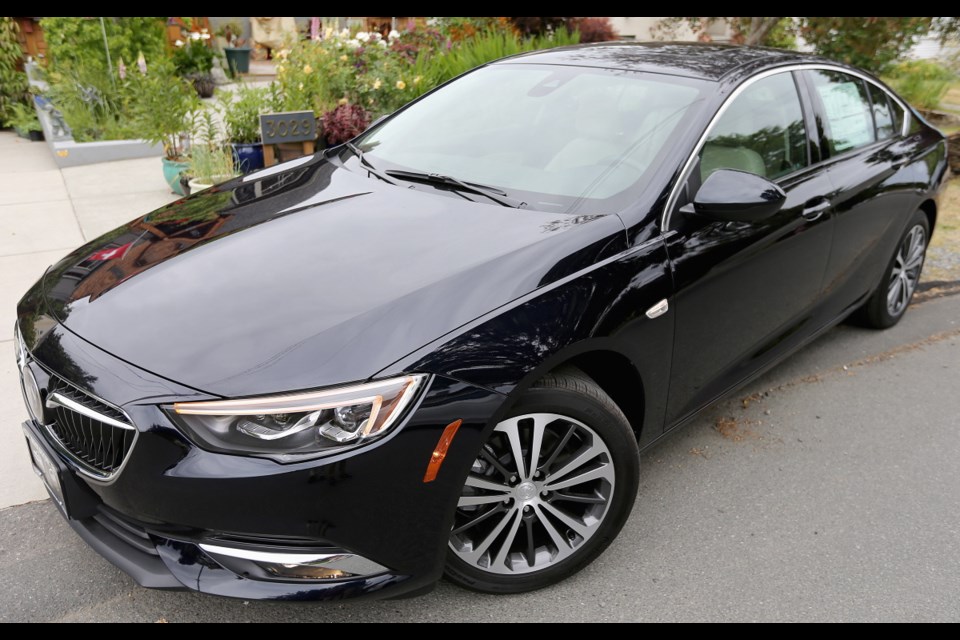Toss out all your preconceptions when you drive the 2018 Buick Regal Sportback.
The Regal, first introduced by Buick in 1973, has undergone a few metamorphoses in the past four decades. It has been many things to many people, including a mid-sized, front-engine, rear-wheel drive personal luxury car, a NASCAR racer (Richard Petty drove one to victory at the Daytona 500 in 1981) and a front-wheel-drive family hauler available with a supercharger.
It is now sold around the world, with different brands and under different names — the Opel Insignia in Europe, Vauxhall Insignia in the United Kingdom and the Holden Commodore in Australia.
The previous generation was manufactured simultaneously in China, Germany and sa���ʴ�ý.
The 2018 model represents the sixth generation of the car.
The Regal comes in three trim models, starting at $31,845. I drove the Essence, the middle of the pack, with a list price of $37,345.
At first glance, the Regal is a contradiction of features. The mind sees a classic mid-sized four-door sedan. Only on closer examination can you discern that the designers have carefully hidden a hatchback on the rear.
Making it a hatchback — Buick refers to it as a Sportback — means it can now carry 892 litres of cargo with the back seats up and 1,719 litres when the 40/20/40 backs are folded (compared with 402 litres in last year’s model). Lift up the trunk mat and you will even find room for a subwoofer for the car’s entertainment system.
The Essence trim puts the Regal smack in the middle of the near-luxury segment, and it compares well. In my tester, the upper part of the dash was in black, with the lower finished in a contrasting khaki, giving the interior an airy feel.
Eschewing the trend to give cellphones priority on the centre console between the two front seats, Buick has instead bestowed the Regal with three cupholders instead.
The design of the cabin is clean and subtle — more European in flavour than American — with a subdued use of chrome. There has been an obvious amount of attention given to ergonomics, as well as fit and finish.
The Regal is comfortable for four and tolerable for five occupants. Despite the rear hatch, backseat passenger headroom is decent.
There are two possible engine and drivetrain configurations available. The base car and Essence model come with a turbocharged 2.0-litre, four-cylinder engine producing 250 horsepower and 265 pound-feet of torque. It is mated to an eight-speed automatic transmission and front-wheel drive.
Mechanically, the Essence model, which I drove, adds all-wheel drive to the package. The top-of-the-line GS gets a 3.6-litre V-6 with 310 hp and 295 lb.-ft. of torque.
The 2.0-litre turbo produces power smoothly, with little discernible turbo lag. The eight-speed auto is velvety smooth as it shifts up the gears. A hard stab at the accelerator and the transmission responds instantaneously. You can engage manual mode, but you will arrive quicker, with less drama, if you leave it in Drive.
The engine comes with an unobtrusive stop-start feature to help lower fuel consumption. It has an 8.0 litre per 100 km rating for the highway and 11.0 in the city.
With today’s electronics, many a gear shift lever has evolved, even disappeared. The shifter in the Buick is traditional, with a good heft and feel that will be appreciated by those reassured by its presence. Thank you, Buick.
In ride, the Regal is an interesting compromise between European stiffness and American cushiness. You won’t mistake it for a BMW, but it does handle well on back roads. But if you are doing a more sedate drive on the highway, the Regal shines, with a comfortable ride and serene interior. It’s not luxury-car quiet, but close.
The wheelbase is a significant 92 millimetres longer in this revamp, which goes a long way to contributing to the improved ride.
My car came equipped with a comprehensive safety suite — front automatic braking, lane-keep assist, adaptive cruise control, front pedestrian detection, lane-change alert and rear cross-traffic alert, among others.
The infotainment system includes an eight-inch diagonal screen, satellite radio, Android Auto and Apple CarPlay. The car uses the speaker system to provide active noise cancellation — perhaps that helped give the impression of lower road and engine noise in the cabin.
The audio system also turns your cellphone into a Wi-Fi hotspot — a feature young passengers will be sure to appreciate.
It might be a cliché, but this definitely isn’t your father’s Buick Regal.
THE SPEC SHEET
Type: Premium mid-sized five-door hatchback, front engine, all-wheel-drive
Engine: Turbocharged 2.0-litre four-cylinder, 250 hp at 5,400 r.p.m., 295 lb.-ft. of torque at 3,000 to 4,000 r.p.m.
Transmission: Eight-speed automatic
Dimensions (mm): Length, 4,900; width, 1,861 ; height, 1,455; wheelbase, 2,830
Curb weight (kg): 1,858
Price (base/as tested): $37,345/$46,025 (includes $1,750 freight and PDI and $100 AC tax)
Options: Experience Buick package $2,695, Driver Confidence package #1 $2,195, Driver Confidence package #2 $1,295, metallic paint $495, block heater $150.
Tires: 245/45 R18 on alloy wheels
Fuel type: Regular/ premium
Fuel economy (L/100km): 8.0 highway/ 11.0 city
Warranty: Four years/80,000 km new car, six years/110,000 km powertrain and roadside assistance



